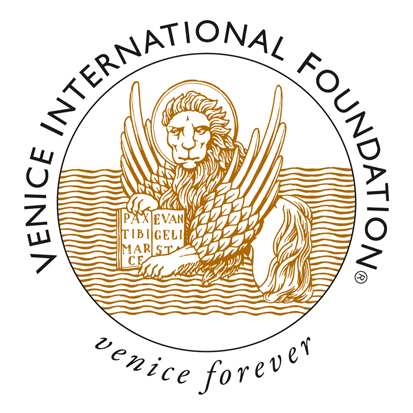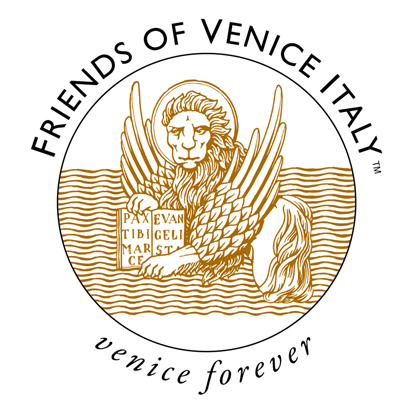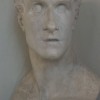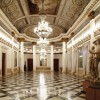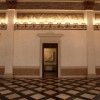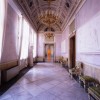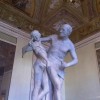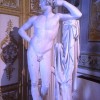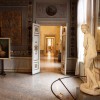The Fondazione Musei Civici di Venezia, in collaboration with and thanks to the support of Venice International Foundation, American Friends of Venice Foundation and the Comité Français pour la Sauvegarde de Venise, presents the “Sublime Canova” project, aimed at therestoration of the precious section dedicated to Antonio Canova at the Museo Correr.
In its present state, a sizeable part of the Correr’s Canova collection is on public display, but not all of it. Above all, it is not possible to see it as an organic whole, in line with a clearly intelligible order. Indeed, the words are dotted around the various neoclassical rooms without any explicit links, even though the settings are sometimes extraordinarily apt, as in the case of the “Napoleonic rooms” at the start of the museum layout (ballroom, Napoleonic gallery overlooking St Mark’s Square, Rooms 4 (‘throne room’) and 5 (‘dining room’). Moreover, in comparison to the museum’s general themes (Venetian culture / Museum of the city and Art collections up to the 16th century), the Canova section appears only to have a weak connection. At times it seems as though the works have been placed in a neoclassical setting to blend in with the background, to the detriment of an appreciation of the single works and as an overall group. And, finally, there are problems of conservation, display and observation associated with the lighting, integration with captions and so on.
Apart from resolving these critical points, an essential goal of the project is the recovery, promotion and relaunching of this fundamental section as regards its international significance and the critical and artistic appreciation of Canova’s oeuvre; this can be done by organically regrouping works and materials (sculptures, models, sketches, drawings, studio materials, personal items, etc.) and by enabling a unified, inter-related vision, thereby assuring visitors and scholars a sufficiently comprehensive knowledge of the artist’s work, as well as essential visual emotion. The Museo Correr will this be known in the world also for this fundamental collection of absolute value, dedicated to beauty and art.
Museological criteria, concepts, spaces and itineraries
The museological plans for the renewed Canova section foresees the display of the words in accordance with a flexible order that places a chronological, evolutionary overview above a simply ‘typological’ one, thereby highlighting Canova’s creative processes, from idea to finished work, passing through the stages of drawing, sketch, model and life-size model. At the same time, thanks to effective yet unobtrusive multimedia and interactive captions and displays, the iconographic and semantic references can be stressed, together with the links with the Antique, and the links between contemporary art and Canova, not forgetting the various processes of actual production of the works. Other aspects to be stressed are the unity and “Venetianness” of some clearly defined holdings; above all, that put together by Domenico Zoppetti, which includes documents, objects and personal items (the large ‘Canova cabinet’, an astonishing ‘lay altar’ and eloquent testimony to the ‘cult’ of Canova practise by the Venetians; this piece was already present in earlier layouts of the museum and is for this reason an important 19th-century ‘museographical’ article).
Considering the nature and value of the Canova collection with regard to the thematic and chronological settings of the museum, it is inevitable that a non-consequential approach be adopted; indeed, it is almost a self-standing and complete monographic section, to be included in the layout of the ‘museum of Venice’ par excellence. In order to limit the perception of this break, it is considered necessary to recover the unitary, ‘monographic’ character of the collection, highlighting in particular the intrinsic ‘Venetianness’ in the single works and holdings.
Included as part of the general plan for the refurbishment of the museum – in which the itineraries and associated flows of the public will be richer and more varied than the present ones – the renewed Canova section will be located in the Ballroom, Napoleonic Gallery and in Rooms 4 (Throne room) and 5 (Dining room).
The Ballroom will be used to house the largest and most demanding sculptures (Apollo and Daphne, Daedalus and Icarus, Perseus), which require the space to enable an an observer to walk around them. This room may also be used occasionally for other purposes. From this room, some ‘visual vanishing points’ will lead both to the adjacent Napoelonic Gallery and, above all, to rooms 4 and 5. In the first of these (room 4) the ‘Canova cabinet’ will be re-assembled and most of the large bas-relief plaster works will be displayed here, together with the drawings and sketches; in the second (room 5), the display will be of some minor sculptures and prints.
As a result of the above distribution of works, when the general project will have been wholly implemented after the public’s first and impressive ‘encounter’ with Canova in the Ballroom, the normal itinerary on the ‘way in’ will tend to usher the visitor first towards the Royal Apartments and then to the Venetian History and Civilisation sections and on to the Art Collections (2nd floor). Then the larger and more explanatory part of the Canova Collection will be met on the ‘way out’ (rooms 4 and 5), towards the end of the normal itinerary, acting as an introduction into the re-admission into neoclassical art in the Napoleonic loggia, which will house the reception and services area (ticket office, cloakroom, cafeteria).
This will give greater justification – including a ‘chronological’ one – to the presence of the monographic Canova section within the museum’s other themes.
“Sublime Canova” project partners:
